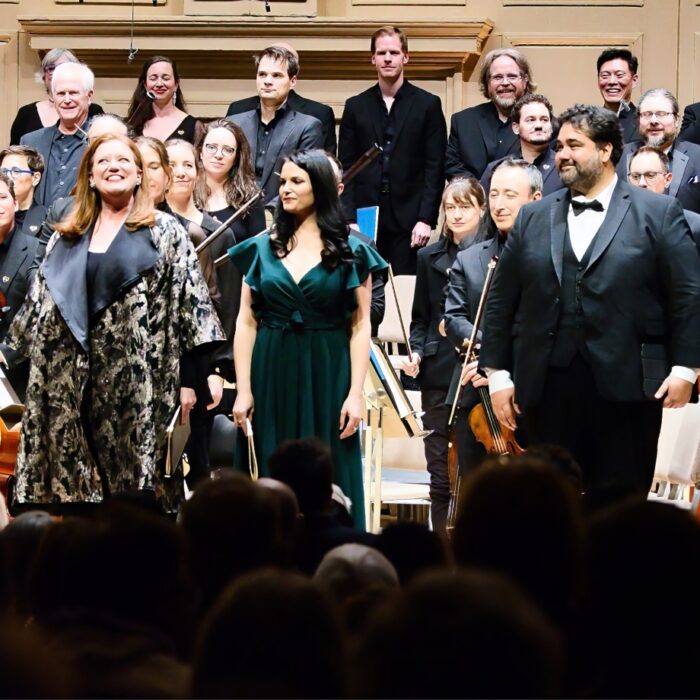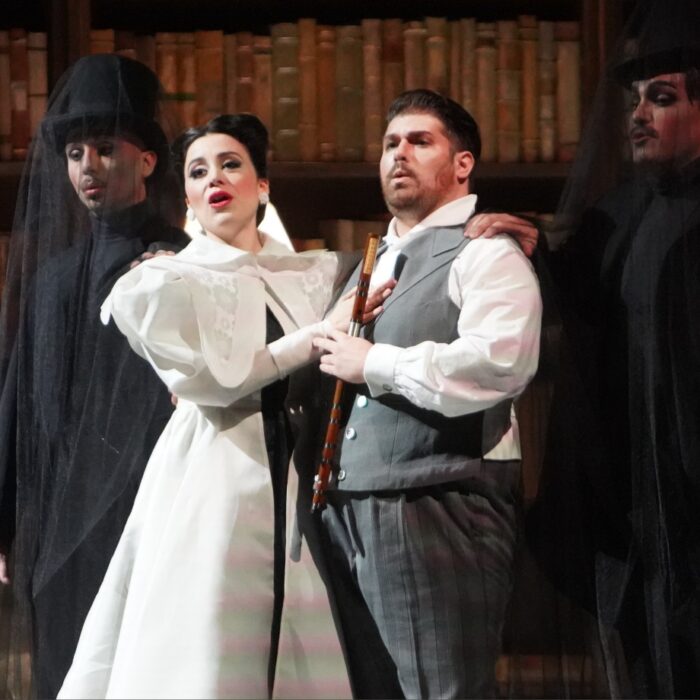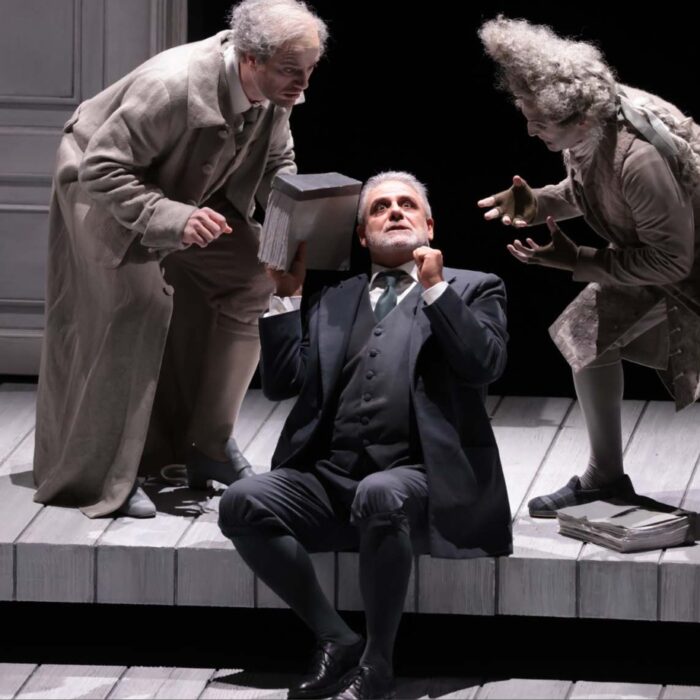
Criticism on Fridays: The Italian Theatres Reopen
A Rather Desperate Attempt by Italian Opera Houses to Survive Against a Force More Destructive Than the Pandemic
By Polina Lyapustina(Photo: Finn Hackshaw)
Every Friday, Polina Lyapustina delivers a short essay on some of the most essential topics in the industry with the intent of establishing a dialogue about the opera world and its future.
Last week, like many people in Italy, I wondered if the country would switch to a yellow zone and public events and outdoor cafes would be allowed again. But the answer came (and it’s not like it was sudden) a few days before the official statement from the Italian government, when I saw the announcement about Teatro del Maggio reopening on Monday, April 26 — the very first day of a possible easing of the lockdown restrictions.
Similar announcements came from everywhere in Italy. During the first three days of this week, numerous theatres reopened for the audience. And it was all certainly good news, but if we think about the reasons, it becomes rather sad.
Following the usual regulation and procedures in Italy, during the lockdown, the theatres are free not to hire personnel. The usual contracts with the musicians last from three nights to a month. With no guarantees for workers and no payments in between performances.
In practice, it leads to a situation where musicians don’t rehearse or prepare anything until the performance is confirmed. It means that in the last six months, classical music in Italy literally stopped. And then, suddenly, the theatres were allowed to reopen this week. And they sure did. Without waiting for a single day. Why?
As you might remember, following Legislative Decree #367 from 1996, Opera Houses in Italy were turned into private foundations with constant control by the government but without any support from it. So the ticket sales and donations became the main source of income for theatres (according to the law, the amount of support from the municipality cannot exceed the amount of the earned and involved funds).
So, the Italian theatres are in dire need of the audience. As soon as possible and on any terms. At the very first day possible, with impressive conductors and casts. And even with a program diverse in a way –– while many go for Verdi, Maggio Musicale Fiorentino started with Stravinsky. Tickets are affordable. Just come to us.
But the spectators in Italy today are still preoccupied. The Italian COVID story — this national tragedy was made of thousands of personal stories. And not only the stories of losing loved ones. But a job loss, daily anxiety, and disappointment in the authorities (in January 2021, the dissatisfaction with government actions reached its peak, and already by Jan. 26, the party of Matteo Renzi had won the key votes in the Chamber and Senate, and Prime Minister Conte had resigned).
And suddenly, the desire to return to normal smoothly won over the passion for the arts in the hearts of the nation. An amazing performance by Daniele Gatti in Florence gathered only 450 people (with a limitation of 500). Teatro dell’Opera di Roma sold all 500 tickets for 10 euros each, and before the performance, Michele Mariotti and the orchestra applauded the audience before the performance. Though mixed with excitement, it was still hard and anxious to return to the concert hall for them.
I could feel it on my first night at Maggio Musicale, and this week I was there three times and the feeling improved very slowly. All the people seemed to know each other, and yet they reached each other very carefully. “How are you, all good? Will Stefano come?” A woman only silently shook her head in response. I averted my eyes, I wanted to cry, and even more I wanted to applaud her for coming, for being here that night.
Maybe not that massively but for those who come to relaunched performances, the atmosphere is full of anticipation, but reality dictates its own rules. The safety measures are simple but strict and I hope, effective. The temperature control at the entrance, the ban on gathering more than five people or sitting in the bar. Seating over one free place even for the couples, also a larger distance between the groups and strangers.
The orchestra (obviously not the winds) and the chorus wear masks during the whole performance. For Stravinsky’s Symphony of Psalms, the chorus in masks is a critical issue, and yet, the choristers did their best. Another easily noticed moment is a slight disconnection between the orchestra and the conductor. At any other, maybe smaller theatre, I’d say it’s not a problem, but here, the lack of the rehearsals and common work of such brilliant musicians is simply striking. Each and every part is perfect, yet they cannot become one.
I immediately remembered the words of Enrico Sciarra (the General Secretary of the FIALS) who, earlier that day, said to me: “We [musicians] are struggling to bring our best to the audience. We do our best, but when you come to the theater, you see it all falling apart. We cannot rehearse, cannot bring the ideas or make decisions. Our great Italian culture simply disappears from the theatres. You cannot find it there anymore.”
So at this sad moment, when everyone loses hope and sees no possibility to stand it as it was anymore, I see a tiny perspective — maybe the pandemic could take another victim? This idle and useless system, requiring so much from artists and giving nothing in return. I refuse to criticize the choristers singing not loud enough wearing the masks. Or to doubt an amazing string section. I’d rather ask how many days and paid hours they were given to prepare the re-opening night? Musicians are in the showcase, literally putting their lives on the line. Because it is their life. Without proper contracts or guarantees, they come when they are asked and forced to accept it as normal. Because it is a national law.
Up to 500 people are now allowed to visit each performance in Italy, and they are so needed there, though they are absolutely not enough to cover the expenses and huge debts that theatres collected in the last 25 years of being “independent.” Lyric foundations need the full halls every evening to simply start working normally behind the stage. And here in Italy, everyone knows there’s a long way to go. Step by step, first to 500 people paying for their ticket, and only then — to the sold-out halls. And I hope that by that moment, something else could change and the extraordinary musicians in Italy would have a chance to perform their best with proper preparation.
But have you noticed which theatres didn’t respond to relief measures and permission to reopen? The Teatro alla Scala di Milano and Teatro di San Carlo di Napoli — the two exceptional cases which managed to adapt to decree #367 and have strong sponsorship contracts. The exceptional and unique cases. During the lockdown, they streamed, and keep streaming their performances (regular and more experimental from La Scala, simply exceptional and rather expensive from San Carlo). They give jobs, guarantees, and future to their workers.
I believe they’ll come to their reopening dates well-prepared and do it with a bang, as always. And then, we will see the Italian opera as we imagine it in our dreams, as it was and as it should be. How come these cases are exceptional?! A bright but such a sad reminder that great quality exists. A painful punch to the theatres with millions of euros debts everywhere else in the country. And an unpleasant but obvious conclusion that money is running this show…
But at what cost? The only two theatres to keep a great culture alive…
Is this enough?


